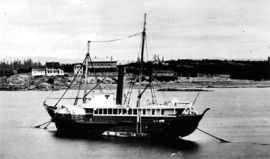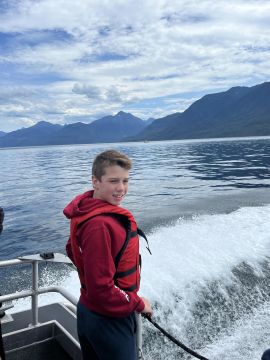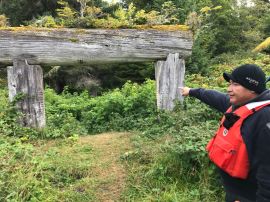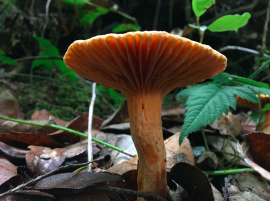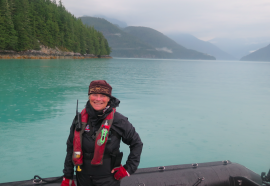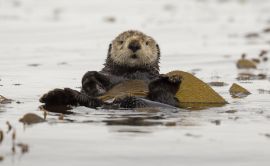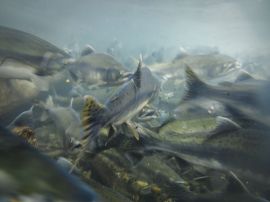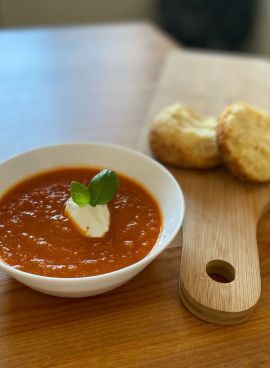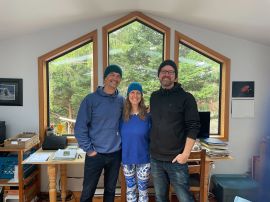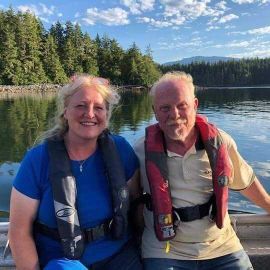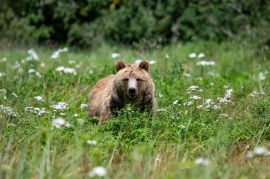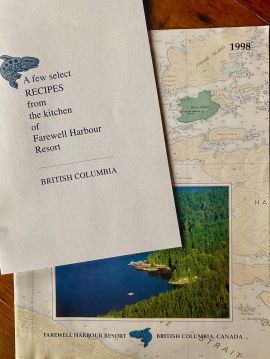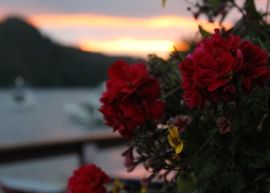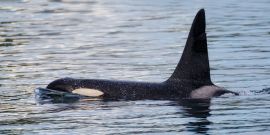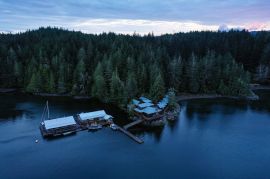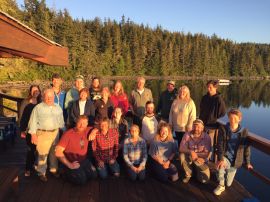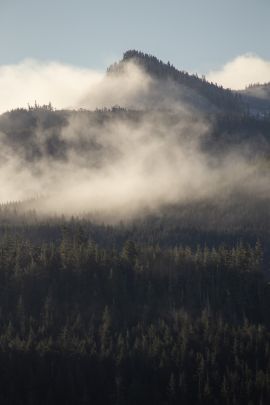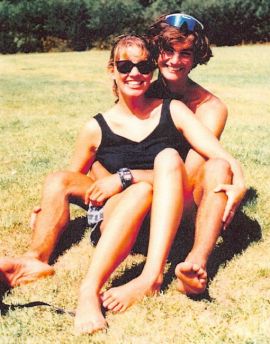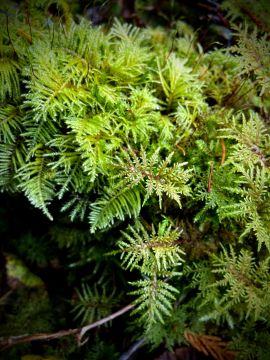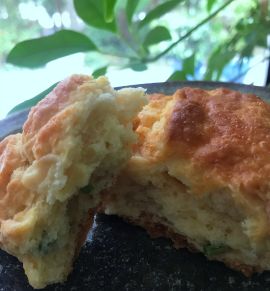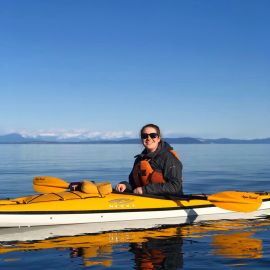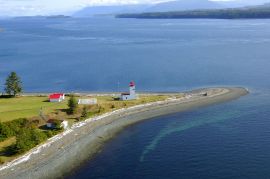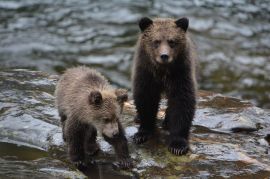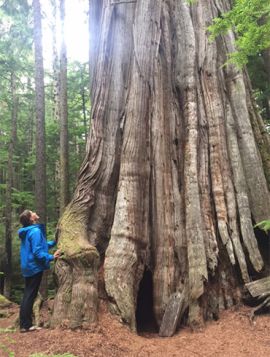How Hammerhead Got a Name
One of our favourite stories to tell at Farewell Harbour Lodge is the time when some of our guests had the pleasure of choosing a nickname for a Humpback whale. It’s a compelling story from our 2019 season, of a delightful family of four from the U.K. - parents Ian and Claire Field, with their two kids, Millie and Sam.First, to provide some context, in the Broughton Archipelago and along BC’s coast, one of the most common marine mammal sightings is for Humpback whales. We often encounter these gigantic, underwater neighbours on our whale watching tours just minutes from our doorstep. It is always an exhilarating experience to hear the symphony of their powerful blows, to see their tail flukes rise out of the water as they go for a deep dive, or to catch a glimpse of their dorsal or pectoral fins. Sometimes, we are lucky enough to witness a half or full-body breach out of the water, followed by an enormous splash.
Humpback whales have not always been so familiar on our coast. Until 1964, the commercial hunting of Humpbacks was not only legal, it was a common occurrence. As a result, their population significantly declined, and sightings of these beautiful mammals were rare from the late 1960s until the early 2000s. Since the 1980s, the Marine Education and Research Society (MERS) has been documenting the return of Humpback whales. With the help of the whale watching and maritime community, MERS coordinates the Canadian Pacific Humpback Collaborative (CPHC), which collects and catalogues photo identification of all known individuals off the coast of British Columbia. This data helps us understand their movements, calving rates, life expectancies and behaviours.
This humpback is unidentified because we can't see the fluke or dorsal fin.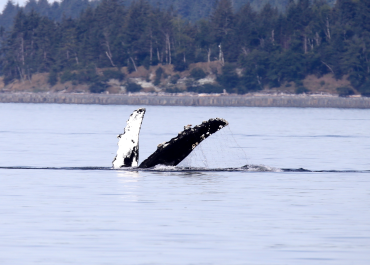 |
This is Jigger (BCX1188)!
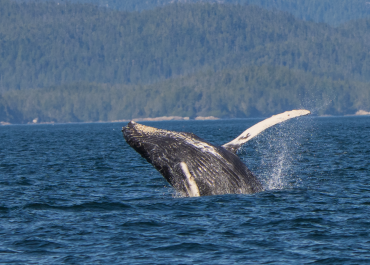 |
This is Tag (BCX0429)
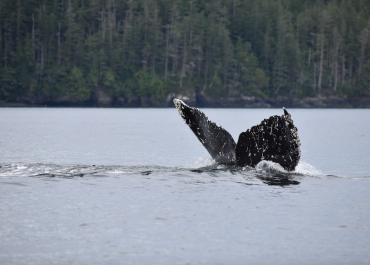 |
Now, back to the story! Ian, Claire, Millie and Sam were on a 7-week family adventure to Canada in August of 2019, and a visit to Farewell Harbour Lodge was part of their adventure. Leaving Tofino in the wee hours of the morning, with Millie and Sam still half asleep, they made it through the scheduled highway closure for the 6-hour drive to the North Island to be on time for their midday water taxi transfer to Farewell Harbour.
| On their journey from Alder Bay to Farewell Harbour, they saw a pod of Orcas and a few Humpbacks which left them impressed, excited and eager for more. After lunch and an orientation to their stay at the lodge, they set out again for an afternoon marine and whale watching tour. Millie and Sam were interested in identifying the Humpbacks they saw right from the start. The family took lots of photos on their marine tour, getting some great shots of Humpbacks. Back at the lodge, the two kids went straight to the Humpback catalogue to see if they could figure out the different whales they saw. One image, taken by their dad Ian, turned out to be a bit of a mystery. They couldn’t locate the unique colouration and markings on this whale’s flukes in any catalogue pictures. Tim suggested they send all their photos in as data contributions to MERS researchers and Jackie Hildering in particular. She is the Co-founder and the Education and Communications Director for MERS. They soon heard back from Jackie that this picture was the first documentation of this individual whale! | 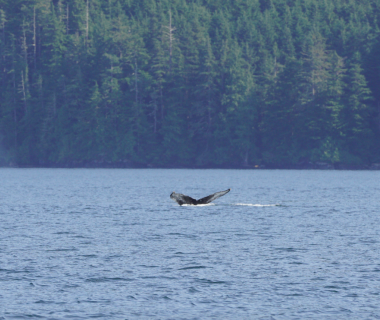
The original Photo taken by Ian Field
|
They were so excited when they realized they were the first to document a sighting of this whale and that this meant they could suggest a nickname for the whale. Ideas started flowing in, and as Ian said, “Most of our discussions for the rest of our trip were consumed by brainstorming names and discussing the whole thing. It was just so exciting!” Millie exclaimed that “it was so crazy that no one else had ever taken a picture of this whale, and now we get to name it!” Much to Sam’s dismay, he reluctantly learned that the whale couldn’t be named ‘Sam’ but instead had to be a reflection of one of the whale’s features so that researchers and whale watchers could more easily remember the name.
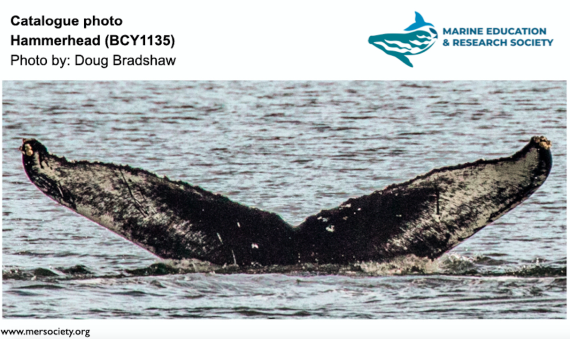 |
Each Humpback individual can be recognized by the unique colouration on the bottom of their tails (flukes), markings, or by the shape of their dorsal fins. When believed to be the first documentation of an individual Humpback, it is assigned a temporary ID by the collaborators of the CPHC. Once the researchers have ensured that this whale has not been catalogued before, the Collaborative assigns it an alphanumeric code. This catalogue code begins with BC for British Columbia and is followed by an X, Y, or Z, based on the amount of white found on their flukes. Flukes with less than 20% white are assigned an X, flukes with between 20 and 80% white are assigned a Y, and flukes with more than 80% white are assigned a Z. Hammerhead's catalogue code is shown to the left along with a photo taken in September of 2019, after the Field family's first documentation. |
Although the assigned code is important for cataloguing, the colloquial nickname is equally crucial. When an individual Humpback’s nickname is associated with a distinctive feature on the whale’s tail or dorsal fin, it helps researchers and whale watchers to identify and remember them more easily. Nicknames also help to remind us these animals are all individuals and that each whale has their own unique journeys, behaviours and preferences.
Having spent many afternoons debating over a nickname, Ian, Claire, Millie and Sam narrowed their options down to two finalists; Arrow or Hammerhead. Arrow was suggested for the right side of the fluke because it looks like an arrowhead. Hammerhead was suggested for the left side of the fluke because of the distinct shape of a Hammerhead shark. In the end, they confirmed their decision in an email to Jackie to be Hammerhead! An excellent choice for this distinctive feature and a special memory that this lovely family will remember for a long time to come.
Looking back on their time at Farewell Harbour, Ian, Claire, Millie and Sam recounted some of their favourite moments that made it a highlight of their time here in Canada. They fondly remembered guide AJ for his charm and humour, Marlie for her kindness and incredible intertidal knowledge, and James for his bare-footed bravery when out in the field looking for Grizzly bears. Of course, they also reminisced about being proud members of Farewell Harbour’s famous 5 pm swim club. In researching this blog, it was so great reminiscing with them and hearing about their lovely memories. They have become part of our Farewell family, and we hope our paths cross again someday. Postscript: The humpback population is currently thriving in the Broughton Archipelago, with MERS having recorded 117 different individuals in their study area between January and August of 2021. -- Sylvie Stewart Grantham |
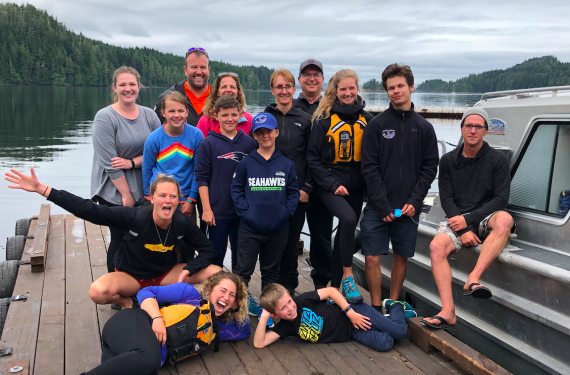 The Field family and the McCarthy family, who have stayed in touch to this day, after meeting at Farewell Harbour Lodge. (Sam laying down in the front, and Millie standing in the blue shirt) |
Photo credits in order or appearance: Matthias Rueegg, Jason Yuan, Darien Walker, Ian Field, Doug Bradshaw (MERS Catalogue)
Data courtesy of MERS

